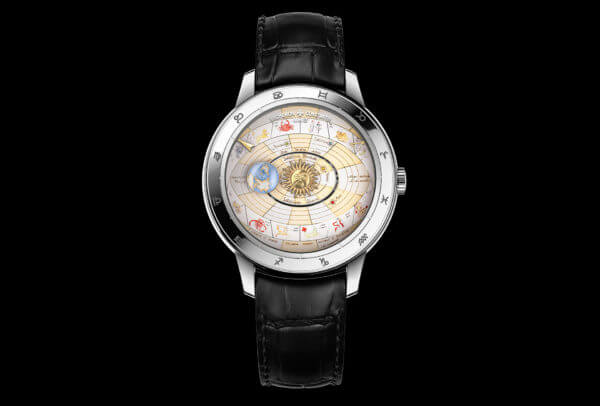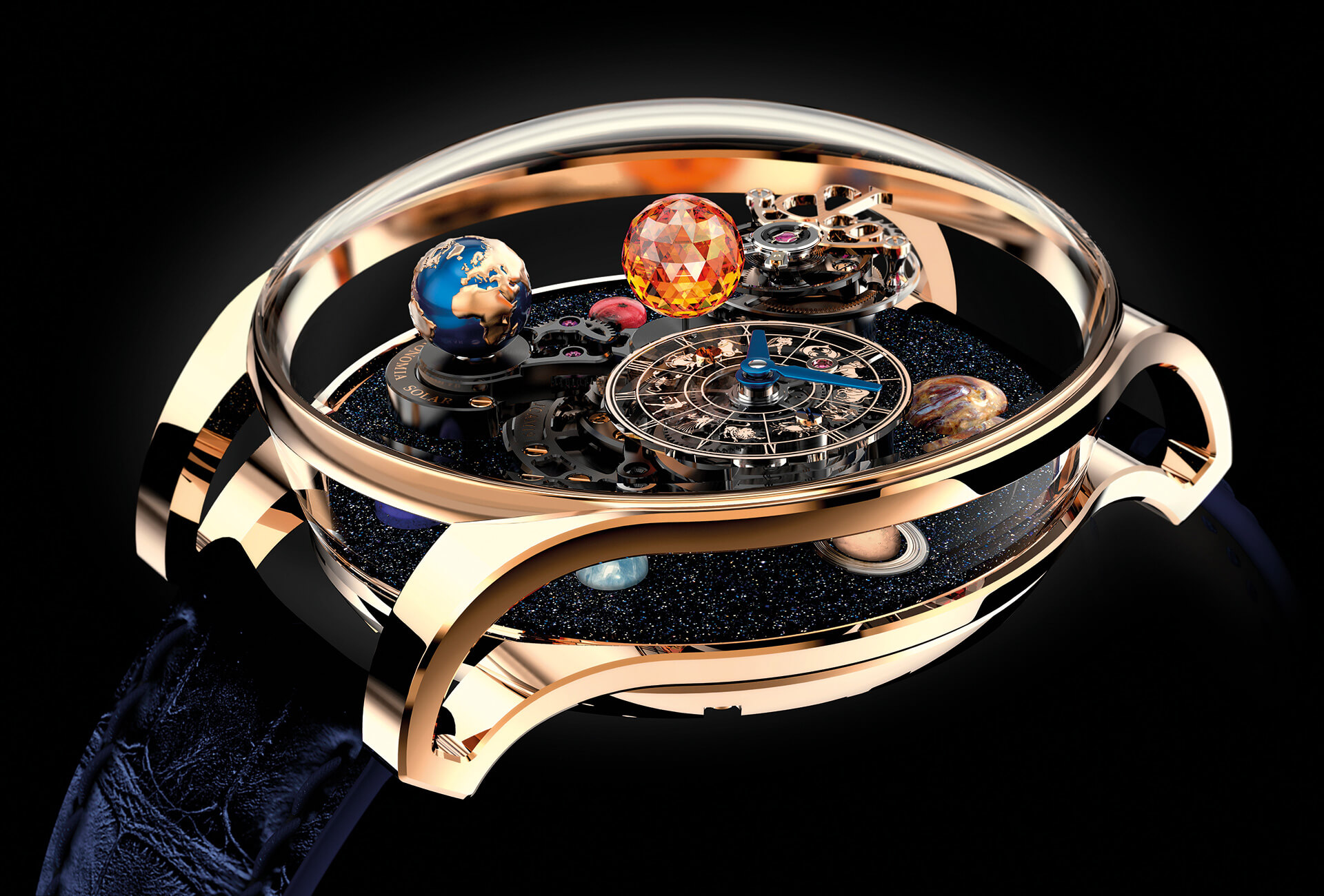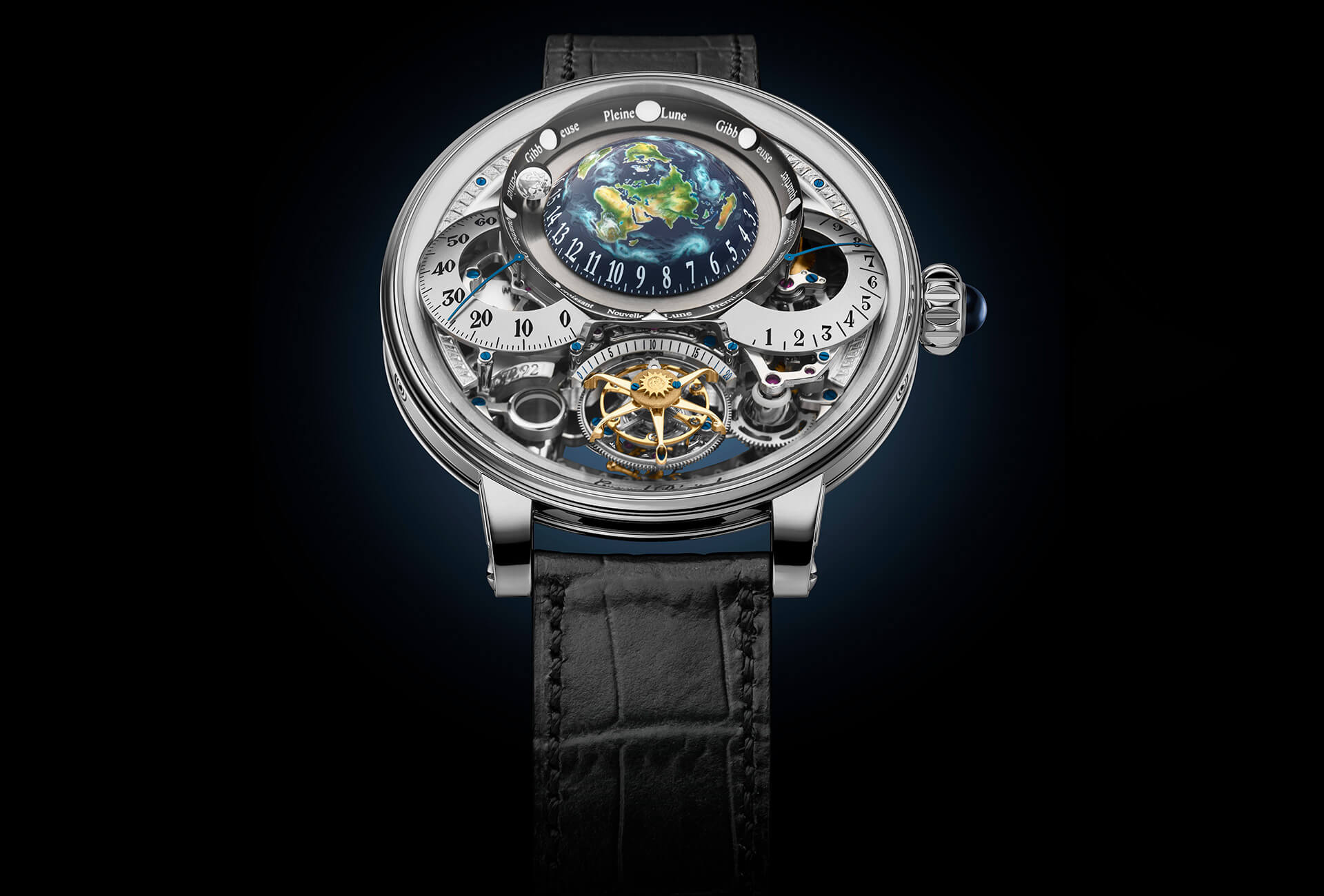What simpler way of negotiating the 24 principal time zones than a terrestrial globe and its meridians set against a 24-hour scale? Nothing, one might imagine, except when transposed to a wristwatch whose movement is already an extraordinarily intricate assembly of components and additional complications. Undeterred, certain watchmakers have risen to the challenge of displaying time around the world; some have even incorporated a three-dimensional portrayal of our planet into unbelievably complex astronomical timepieces. The examples shown here are a demonstration of watchmakers’ ingenuity in producing timepieces that are, dare we say it, out of this world. They are all releases from the past 18 months, with the exception of those by A. Lange & Söhne and Jaeger-LeCoultre, both presented in 2014. The list also includes watches by Chopard and Panerai that have no Earth but whose “astronomical content” makes them largely worthy of interest.
A. Lange & Söhne Terra Luna
This Richard Lange is a sight to behold from whichever side it’s viewed. Hours, minutes and seconds are shown on the front by a regulator-style display, along with the day, date, month and leap year indications of the perpetual calendar, and a power-reserve indicator in an aperture. The back is reserved for an orbital moonphase display which also shows the Moon’s position in relation to the Earth and the Sun. This is Saxon watchmaking at its most accomplished. The uncompromising precision of the manually-wound L096.1 manufacture movement is achieved through a constant-force escapement. Twin barrels provide an exceptional 14 days of power reserve.
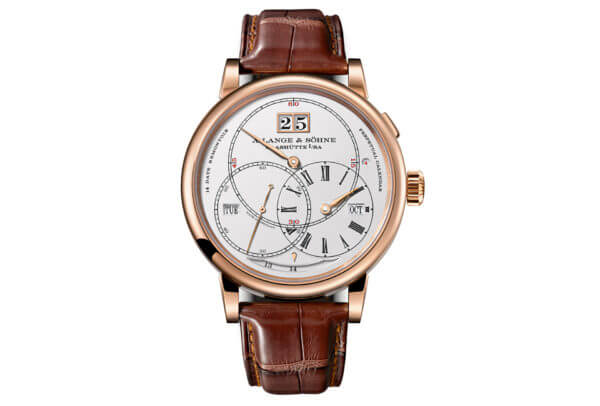
Arnold & Son Globetrotter
In the late eighteenth century, John Arnold and his son were renowned manufacturers of marine chronometers, used to calculate longitude at sea. This Globetrotter takes inspiration from those very chronometers. The Northern Hemisphere is shown in three-dimensional form as a domed disc in the centre of the dial. This miniature map rotates once every 24 hours, to give an estimate of time at any point on the globe. The hour and minute hands emerge from underneath this globe which gives the illusion of floating above the dial.
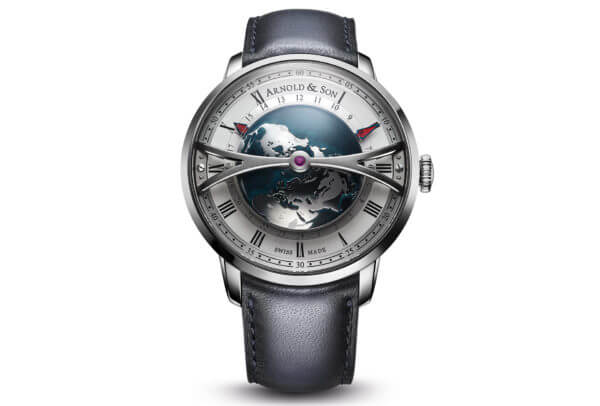
Bovet Récital 22 Grand Récital
The Récital 22 Grand Récital tourbillon completes a trilogy of astronomical watches that Bovet debuted in 2016. It is in fact a miniature orrery, representing the Sun, the Earth and the Moon. Our nearest star, the Sun, is represented by the flying tourbillon, while the impressive hemispherical Earth rotates on its own axis and shows the hours over 24 hours. The spherical Moon orbits the Earth at a rate corresponding to the exact length of a synodic period, which is 29.53 days. Also on the front side are retrograde minutes and a power-reserve gauge. Turning this watch over reveals a perpetual calendar with indications of the hour, date, day, month and leap year cycle.
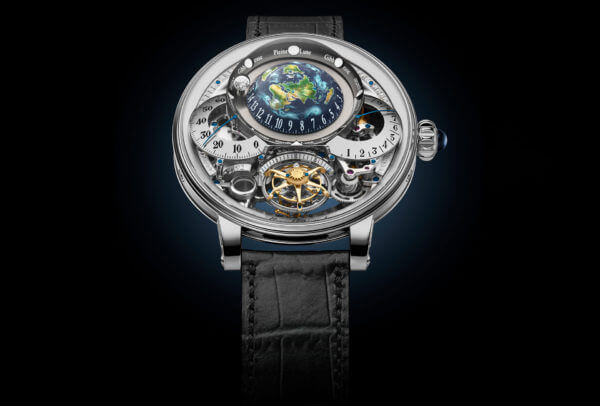
Chopard L.U.C All-in-One
Introduced in 2010 in honour of Chopard’s 150th anniversary, this grand complication watch is driven by the L.U.C 05.01-L movement whose 516 components drive 14 complications, shared between the two faces. On the front side, the perpetual calendar with large date display appears in large apertures and on subdials, next to a superbly wrought tourbillon. On the reverse side, an equation of time, power reserve, and sunrise and sunset times frame the orbital moonphase indication. This year, Chopard has issued a limited edition of the L.U.C All-in-One comprising 10 pieces in platinum and 10 in 18k rose gold, hallmarked with the Poinçon de Genève.
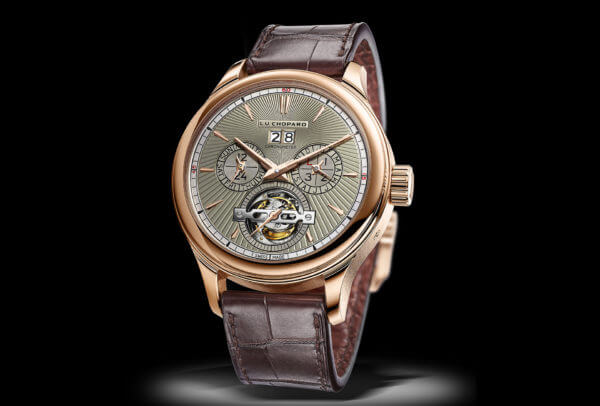
Girard-Perregaux Tri-Axial Planetarium
Three years after the Tri-Axial Tourbillon, Girard-Perregaux again places performance and precision uppermost with this Tri-Axial Planetarium. The high-speed tourbillon, whose regulator turns not on one but three axes, is again a centre of attention, but this time shares the spotlight with two captivating complications. One is a precision moon phase that will require a single adjustment in 122 years. The other is a rotating three-dimensional terrestrial globe which acts as a day/night indicator. It is miniature-painted by hand with cartography that depicts the world as it was known in 1791, the year Girard-Perregaux was established.
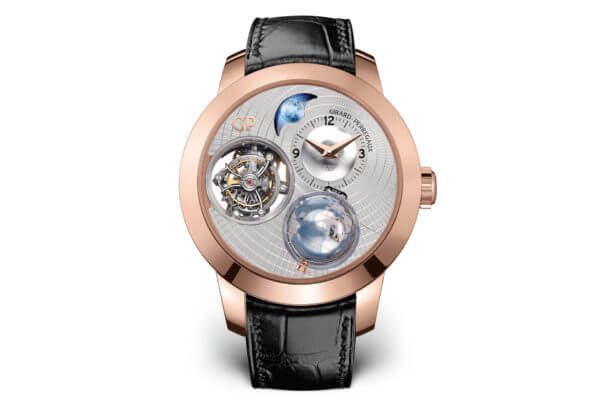
Greubel Forsey GMT Earth
Like Earth itself, the globe on Greubel Forsey’s new GMT Earth appears to be floating in space. Laser-engraved, it can be admired from both the front and the back of the watch for an intuitive view of time around the world. The 24 time zones on the back, with summer and winter times, complete the picture. In addition to hours, minutes, small seconds and a power-reserve indicator, there is a second time zone shown by a red triangle at 10 o’clock. Greubel Forsey’s third Fundamental Invention, a 24-seconds inclined tourbillon, sits in the lower part of the dial.
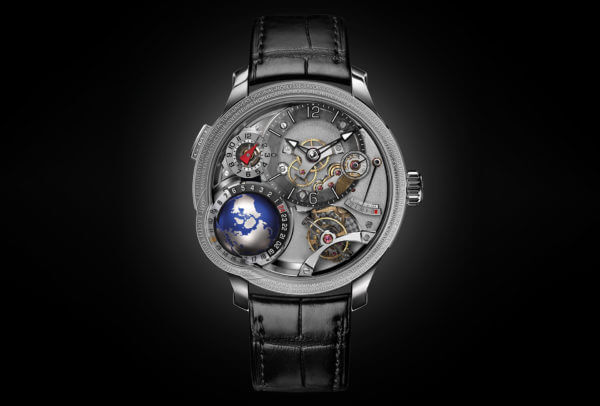
Jacob & Co Astronomia Solar
The seven planets in the solar system (not counting Earth) dance across the aventurine dial of this Astronomia Solar by Jacob & Co as semi-precious stones. The Sun, in the centre, is formed by a citrine whose 288 facets are characteristic of the Jacob Cut. The hand-engraved Earth makes one complete rotation on its axis every 60 seconds and also orbits the dial once every ten minutes – as do the hours and minutes subdial and the flying tourbillon. A differential mechanism rotates the timekeeping subdial counter-clockwise so that it is always upright. The same counter-clockwise movement is imparted to the main dial that carries the planets to better symbolise the solar system in motion.
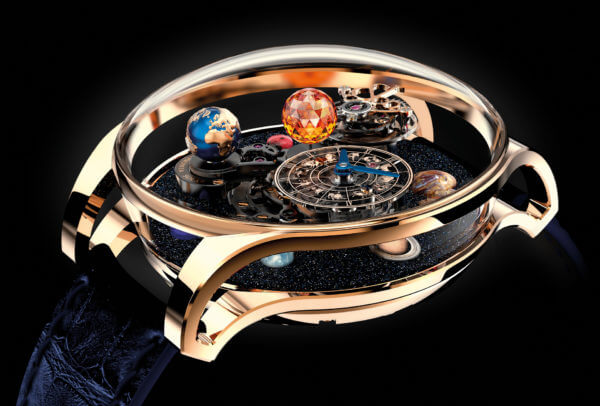
Jaeger-LeCoultre Duomètre Unique Travel Time pink gold
Exclusive to Jaeger-LeCoultre, the Dual-Wing system incorporates a separate power source for each function, thereby reducing the “turbulences” associated with a gradually unwinding mainspring. This is its first appearance in a travel-inspired timepiece. The first mechanism drives the home time display while the second is for the second time zone (travel time) display, distinguished by its jumping hours. The two share the same regulating organ but each has its own energy supply and separate power-reserve indication. The Earth at 6 o’clock on the dial, encircled by a day/night ring, is complemented by different time zone indications and is synchronised with travel time.
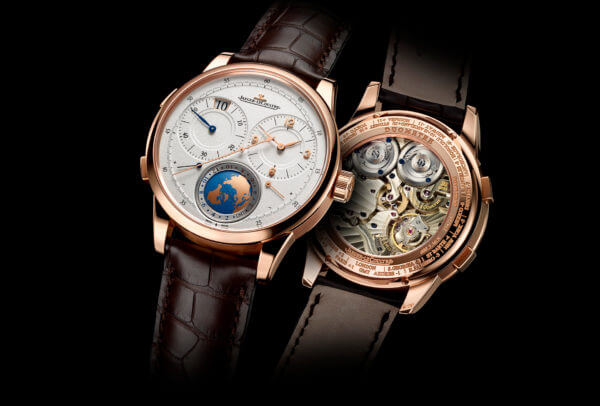
Montblanc 1858 Geosphere
Celebrating the 160th anniversary of Minerva, its Haute Horlogerie Manufacture, Montblanc – which shares its name with the highest mountain in the Alps – has dedicated this 1858 Geosphere to the Seven Summits climb, the ultimate mountaineering challenge. These seven peaks are symbolised by as many red dots on the two domed hemisphere globes. Rotating once every 24 hours, one clockwise and one anti-clockwise, they indicate world times. The longitude reference meridian for both hemispheres is highlighted in luminescent white. There is also a second time zone display at 9 o’clock, together with a date window at 3 o’clock. A second version in bronze adds to the vintage allure.

Panerai Astronomo
The Astronomo debuted in 2010 to mark the fourth centenary of Galileo’s observations of celestial bodies. In addition to the Panerai tourbillon which rotates at right angles to the balance, this second model incorporates an equation of time, sunrise and sunset times, a GMT function, a customisable moonphase display on the back, and a novel date display on a polarised borosilicate glass disc. The laser-engraved numerals remain virtually invisible until they align with the small date window, whose polarised crystal then brings them into view. This patented innovation preserves the all-important transparency of the dial side for a clear view of the mechanism.
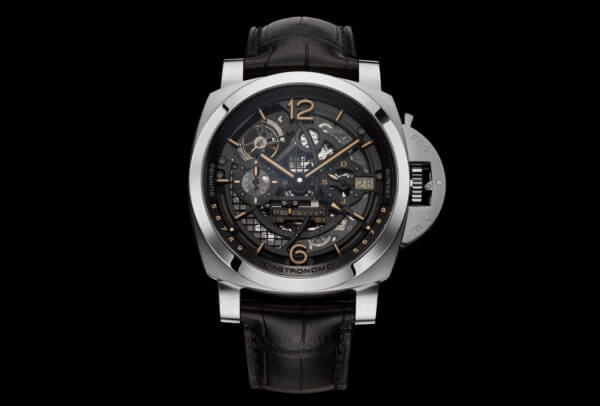
Vacheron Constantin Métiers d’Art Copernicus celestial spheres 2460 RT
De revolutionibus orbium coelestium, Nicolaus Copernicus’s treatise on the revolutions of the heavenly bodies, published in 1543, provided Vacheron Constantin with the inspiration for this truly remarkable watch. Newly developed and made by Vacheron Constantin, the 2460 RT movement indicates hours and minutes by way of peripheral hands, thus leaving the stage empty for the two complications, inspired by Copernicus’s heliocentric system. The Earth spins on its axis in 24 hours while orbiting the Sun in one tropical year. Vacheron Constantin’s watchmakers have taken precision to the highest degree, as the mechanism will require a single correction of one day after 8,000 years. In other words, an eternity!
